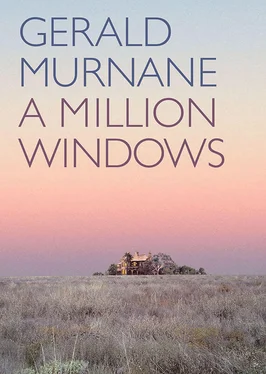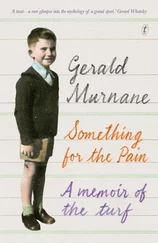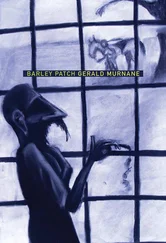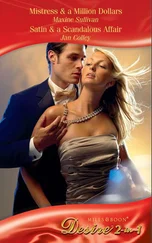Gerald Murnane
A Million Windows
Gerald Murnane’s new work of fiction focuses on the importance of trust, and the possibility of betrayal, in storytelling as in life. It is concerned with the bond established between author and reader, but soon other relationships come into view, between child and parent, boyfriend and girlfriend, husband and wife. Murnane’s fiction is woven from images, and the feelings associated with them. A house of two or perhaps three storeys, the setting sun reflected in its windows like drops of golden oil, the procession of dark-haired women, a clearing in the forest, the colours indigo and silver-grey, the young woman, hardly more than a girl, who had leaped into a well — these images flit through A Million Windows like butterflies, and build to an emotional crescendo that is all the more powerful for the intricacy of its patterning.
Gerald Murnane is the author of ten books of fiction, including Tamarisk Row, The Plains, Inland, Barley Patch and A History of Books , and a collection of essays, Invisible Yet Enduring Lilacs . He is a recipient of the Patrick White Literary Award, the Melbourne Prize for Literature, the Adelaide Festival Literature Award for Innovation, and an Emeritus Fellowship from the Literature Board of the Australia Council.
The house of fiction has in short not one window, but a million…
HENRY JAMES
The single holland blind in his room was still drawn down in late afternoon, although he would have got out of his bed and would have washed and dressed at first light. At the moment when he became a personage in this work of fiction, I supposed him to be seated at his small desk with his back to the glowing blind and to be reading, by the light of a desk-lamp, a sentence that he had written, perhaps only a few minutes earlier, at the head of a blank page. The sentence was his remembered version of a quotation, so to call it, that he had read long before. He recalls, or so I suppose, that the author of the sentence was a male person from an earlier century but he cannot recall the name of the author. The sentence is as follows: All our troubles arise from our being unwilling to keep to our room .

One of the commonest devices used by writers of fiction is the withholding of essential information. Much faulty fiction seems to derive from its author’s having been overly influenced by films, and yet I have to admit that authors were withholding information from readers long before the first film-scripts were written. Long before cameras could record such scenes, solitary characters were reported as sitting in quiet rooms or trudging across lonely landscapes at the beginnings of works of fiction while the readers of those works looked forward to learning, all in good time, the names of those characters, their histories, and even their motives and deepest feelings. The narrator of this work of fiction wants no reader of the previous paragraph to look forward to learning any such details in connection with the personage mentioned there.

How many years have passed since I last watched a film — since I last walked out of some or other cinema ashamed at having wasted an afternoon or an evening and bothered already by the first of the clusters of false images that would occur to me again and again in coming weeks — false because their source was not my mind but sequences of shapes and colours displayed in the visible world as though objects and surfaces were all? And yet, when young I had hoped for much from films. I had hoped to see, in black-and-white scenery arranged by persons with mostly European names, visible, memorable signs from what I would have called, at that time, the world of imagination, as though it was a place I had yet to discover. One of the European names was a certain Swedish name, and that same name took my eye on the day before I began this work of fiction and while I was turning the pages of a weekly news-magazine from some or another year in the 1980s. One of the pages was headed CINEMA , and I would have turned the page without reading it if the Swedish name had not taken my eye. I gathered from the little I read that the Swede, late in his career, had directed, if that is the correct word, a film set in a castle many a room of which was occupied by one or another chief character from one or another of the many films directed by the Swede in earlier years.
I read once that the writer of fiction Henry James got much enjoyment from hearing from fellow-guests at dinner-parties anecdotes that he later made use of in his fiction. James, however, as soon as he had decided that something he was hearing would later be of use to him, begged his informant not to go further; not to reveal the outcome of what was being recounted. At a certain point, James had seemingly got all the ingredients he needed for a work of fiction and preferred to devise his own outcome rather than merely report the actual. When I closed the pages of the weekly news-magazine as soon as I had learned what is reported in the previous paragraph and without having learned who are the occupants of the castle or what takes place when they meet together, assuming that they do so meet, then I resembled Henry James in my not wanting to learn more than a few ingredients, so to call them, but unlike James I was not yet aware that I had acquired my ingredients. My only reaction at the time was to admire the Swede for what I took to be a considerable achievement and to read no further about him and his film lest I learn that my admiration was misplaced. His achievement, so I supposed, was his having discovered, late in life, that a true work of art in no way depends for its justification on its seeming connections with the place that many call the real world and I call the visible world.
I would have watched several of the Swede’s films during the 1960s, which was the last decade when I still hoped to learn from films. After I had written the previous sentence, I set about recalling whatever images I could recall from those films. I recalled first an image of a white-haired man looking out over a small lake; behind the man is a house of two or, perhaps, three storeys. I then recalled a certain expression on the face of a ragged boy of ten or twelve years. The boy and his two ragged men-companions had completed, moments before, the rape and murder of a young woman, hardly more than a girl, after they had met up with her in a clearing in a forest. Moments after I had seen the face of the ragged boy, he vomited.
I was about to ask the questions why am I able to call to mind only those two images from the many thousands of images that would have appeared to me while I watched the Swede’s films during the 1960s? Do those images have for me any seeming connection with the place that I call the visible world? And, if the images seem to have no such connection, what connection, if any, do they have with the place that I call the invisible world or, sometimes for convenience, my mind? First, however, I had better reassure the discerning reader that I am well aware of the many falsehoods in the previous paragraph — falsehoods that I allowed into the text for the sake of the undiscerning reader, who might have found tedious a strictly accurate account of what is reported there. I reported, accurately enough, that I had recalled an image of a white-haired man but thereafter I fell into everyday language, so to call it, such as probably caused many an undiscerning reader to see in mind images of an actual-seeming ragged boy and actual-seeming ragged men and to forget that what were, in fact, denoted were mental images, or memories, as some would call them, of images projected through film onto a screen fifty years before their recall.
Читать дальше










